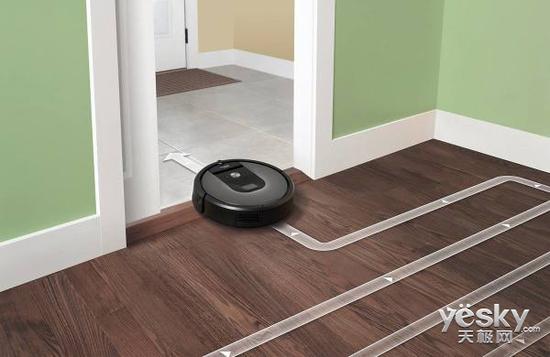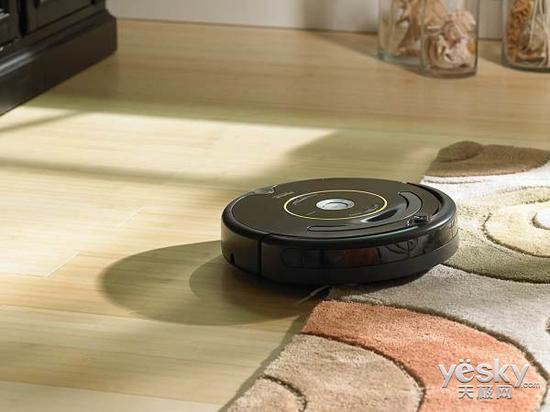Housework is a big problem we face every day. Although it doesn't waste too much time, every day you need to complete the work of sweeping the floor, but it also makes people who work for a day have some headaches. The emergence of sweeping robots effectively solved this problem. At one time, sweeping robots could only walk on the ground in the home by "instinct" to expand the coverage area, so as to achieve the purpose of cleaning the ground in the home. But today's sweeping robots on the market are mostly using some positioning technology, so that the sweeping robot can "understand" where they are and where they should go. Under these technologies, the sweeping robot is no longer just a messy work, but the ground cover is completed in the shortest time and path. How exactly do these technologies work? Today, Xiaobian will take you through the positioning technology used by the sweeping robot. Compared to the field positioning method, the working environment of the sweeping robot determines that it needs to be more accurate in the perception of the environment. From the point of view of positioning, it can be divided into two types: relative positioning and absolute positioning. Relative positioning can achieve positioning in a short time, with high precision and good stability. However, as time and distance increase, the error accumulation will eventually exceed the maximum error range allowed by the positioning, which will affect the positioning accuracy. Absolute positioning Due to different positioning methods, the measured positions have independent characteristics in time and space, and will not cause positioning failure due to long-term use, but such positioning methods are susceptible to interference including noise, environment and signals. Large disturbances may be formed in a short time. Sweeping robot relative positioning technology The code wheel method is the least costly method of relative positioning. Its positioning principle is to calculate the number of wheels that have been rotated using the photoelectric code wheel mounted on the wheel, and calculate the position of the robot by the displacement amount. However, such calculations have large errors. In relative positioning, the dead reckoning algorithm is a classical positioning method and the most widely used method. This method acquires motion information by a sensor disposed on the cleaning robot, and estimates the relative position of the cleaning robot by recursing the accumulated working hours. For example, a code wheel, a gyroscope, or the like mounted on a cleaning robot. The inertial sensor and the gyroscope are used to obtain the angular acceleration and linear acceleration parameters of the robot, and the position of the robot is obtained by mathematical integration. Such positioning method is superior to the code wheel method in positioning accuracy, but since there are errors in the measurement of each parameter, the error will continue to expand under a long time of accumulation, so the positioning accuracy will decrease with time and distance. Sweeping robot absolute positioning technology Absolute positioning mainly refers to the positioning method in which the robot uses the external reference object for comparison and estimates the position by comparing the distance between the reference object and the reference object. These include beacon-based positioning, vision-based positioning, and environmental map model matching positioning. The beacon-based positioning method was originally applied in the field of navigation and aviation, and the positioning was achieved by radio waves given by the radio base station. Indoors, what the sweeping robot needs to do is to calculate the relative distance between the sweeping robot and the beacon using the position of the known beacon. After fixing this distance and bringing it into the known beacon position, the sweeping robot is obtained. The absolute location. The use of beacon positioning requires that three conditions be met at the same time, that is, the beacon is fixed and the absolute coordinates are known. The beacon has active and passive features and is easy to recognize, and the position of the beacon can be detected from indoors. For such positioning systems, beacons must be scanned against known beacons and sensors mounted on the robot, which also requires a range of sensor technologies. The beacon-based positioning method can perform real-time measurement without error accumulation, but the cost and maintenance cost of this method are high. The environment map model matching positioning uses a sensor equipped with a sweeping robot to scan and detect the surrounding environment and draw a map with details. After matching with the map stored inside the machine, it can be judged by the similarities and differences to know its current location. However, this method also has its limitations. Since the scanning accuracy is still unable to meet the scanning of complex scenes, in these scenes, the cleaning robot is often not accurate enough, so it is only suitable for places with simple environmental structure. At present, many sweeping robots are not only equipped with various types of sensors, but also used cameras. This kind of method is similar to human "visual" positioning, which is based on visual positioning. The vision-based positioning is divided into two types: monocular vision and binocular vision. The difference lies in the number of cameras used. Monocular vision has only one camera and cannot observe accurate 3D images, so it has a limited range of applications. Binocular vision is the observation of the environment through two cameras on the left and right sides. Using the parallax principle, the left and right cameras only need to correspond to the same point, and the position information in the three-dimensional environment can be calculated. Due to the accumulation of technology and experience in robot recognition patterns in recent years, robots based on visual positioning have become the focus of attention of manufacturers. In today's world, intelligence has become an important trend in the development of home appliances. Many smart home appliances make people's lives more convenient. Among them, the sweeping robot has attracted the attention of many consumers with its unique functionality. Despite the increasing popularity, some consumers still believe that it is not practical for sweeping robots to spend a lot of time every day to clean up. The continuous improvement of the positioning system, in fact, represents the "intellectual level" of the sweeping robot. Under the blessing of these technologies, the future sweeping robots may become a must-have appliance like ice-washing and enter our family life. Terminal Block Din Rail,Spring Grounding Terminal Block,Pe Grounding Terminal Block,Plastic Terminal Blocks Wonke Electric CO.,Ltd. , https://www.wkdq-electric.com

September 16, 2022